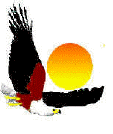
 Reg.
No. 98/18384/08 (a Section 21 Co. not for gain)
Reg.
No. 98/18384/08 (a Section 21 Co. not for gain)
"In
Custody of Our Natural Heritage" 
![]()
"Subject" links at bottom of page
"In
Custody of Our Natural Heritage" "Subject" links at bottom of page |
Burchells Zebra
This gregarious family unit usually consists of a stallion, 1 tot 12 mares with their foals and is called a harem. Harems are stable with committed members. When a member is lost the stallion will search and call for them and the whole herd will adjust its pace to accommodate sick or cripple members.
Mares give birth lying down close to the group. The foal stands within 10-15 min, walks after 20 min and runs within an hour. The mother chases away all other females during the first few days to enable her to bond with the foal. For the first few days foals eat the fresh dung of adults to obtain the bacteria needed for digestion. Males are a little larger than females with a narrow black stripe running vertically between their hind legs, in females this stripe is wide. Every Zebra’s pattern is unique, similar to fingerprints in humans. When fleeing it is only done at half speed, although they can reach speeds of 60-70km/h, to ensure the group staying together. When attacked the herd bunches up, mares with foals running in front, followed by other mares and the stallion right at the back. Should a zebra break the rule of splitting from the group it will be singled out and attacked. Zebra’s form an important link in the food chain. By grazing long, coarse grass (smaller species find these unpalatable), trampling down what they do not eat, zebra open grass areas for other grazers which feed at the next level. Zebra’s, although having a dangerous kick, are a valuable protein supply for large predators. Photo's taken in Marloth Park : Males were testing urine of female in estrus by way of Flemen. |
|
Wildlife 1 Wildlife 2 Wildlife 3 Predators Lion Photos Lion Ladies Birds Insects Snakes Images Riverview Lost? click here to go back to the NEF CONTENTS page Copyright © 2000 Ngwenya Eco FoundationWebmaster: e-mail: Charmane
Baleiza
Please
do not
copy any
photographs without permission! |